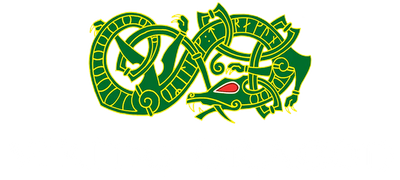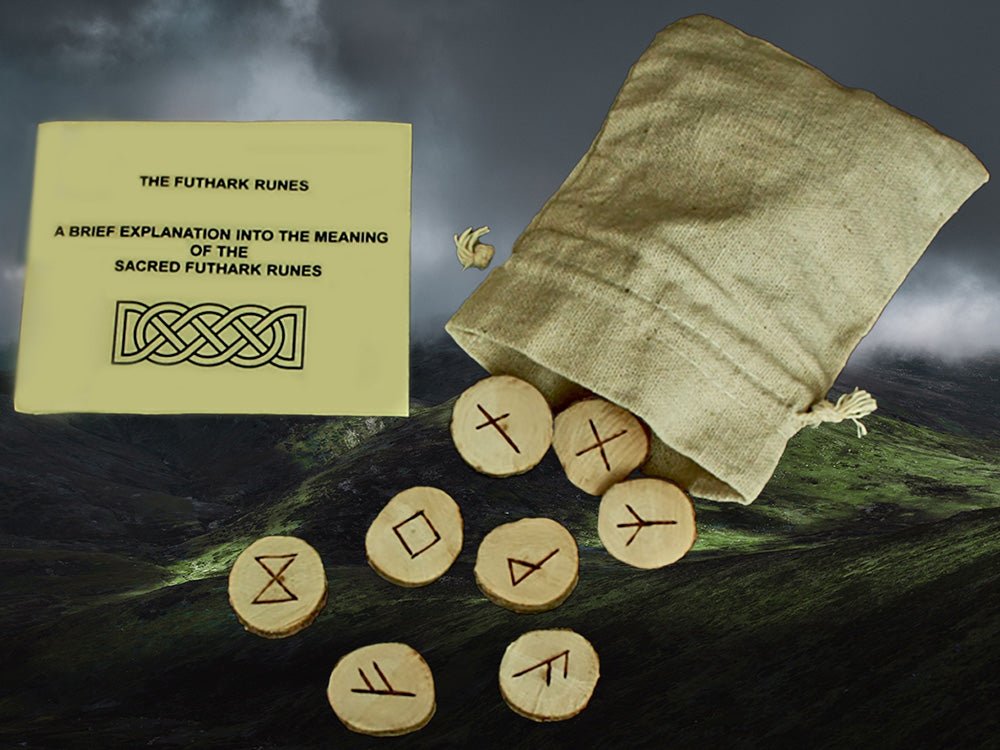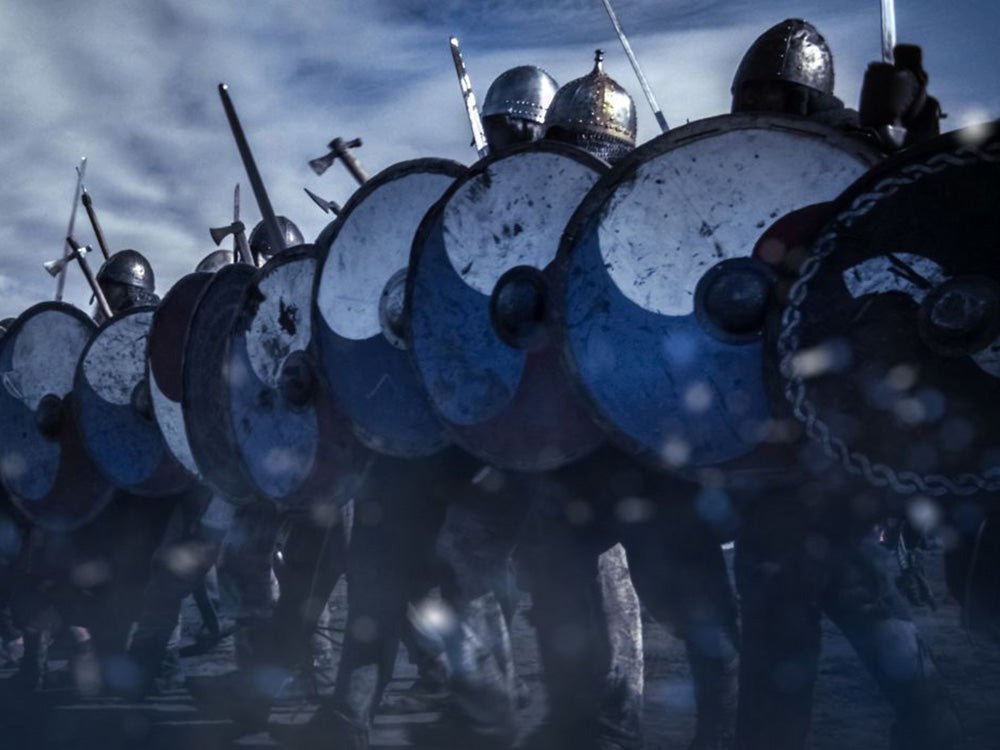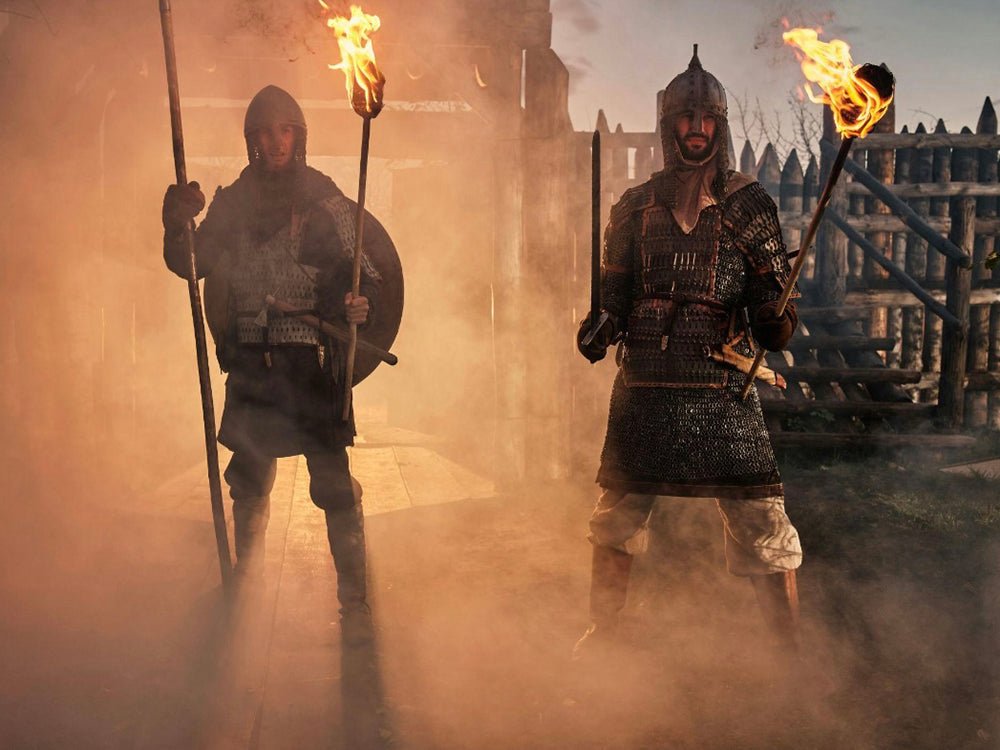
You’ve probably seen Viking runes before - the strange, straight-lined symbols that populate Viking media and decorate shields and ships. While they may look confusing and mystical, the reality of Viking runes in the culture at the time and in the modern world is as interesting and diverse as the cultures they come from. Here’s what you need to know about the origins, meanings, and uses of Viking runes.
What are Viking runes?
A “rune” is another name for a letter or symbol used in an alphabet system to document information in written form. The Viking runes as we know them today were originally developed by Germanic tribes across Europe in the first few centuries AD. The earliest inscriptions we’ve found date back to 150 AD and are particularly common in Denmark, Germany, and Sweden. The runes’ shapes were probably inspired at least in part by the Roman writing system.
We refer to Viking runes formally as the Elder Futhark and Younger Futhark alphabets, depending on the time period they originate in. This name, Futhark, comes from the roughly translated first six letters of the alphabet: f, u, þ (pronounced “th”), a, r, and k. The Elder Futhark runes are a set of 24 symbols that were developed in the Iron Age, between roughly 1200 BC and 600 BC, while the Younger Futhark runes are a set of only 16 symbols that date to the beginning of what we know as the Viking Age, around 800 AD to just after 1000 AD.
What do the Viking runes mean?
The Viking runes, like any alphabet, were typically used to transcribe words, and so can be thought of to translate roughly to letters in the modern English alphabet. That being said, the translations aren’t exact, as the languages used by the Vikings - typically Scandinavian in nature - were structured differently than English and used different sounds that aren’t represented in the English alphabet. Modern interpreters of runic inscriptions typically have to discern which language the runes are representing, and then translate the meaning from that language.
Here are the Younger Futhark runes and their possible meanings:

Image via kcajd on Deviantart.
Here are the Elder Futhark runes and their possible meanings:

Image via Wikimedia Commons.
Here is a chart of the names, translations, and common meanings of the Elder Futhark runes.
|
NAME |
TRANSLATION |
MEANING |
|
Fehu |
F |
Cattle, prosperity, gain or fulfilment |
|
Uruz |
U |
Wild ox, strength, life force, determination |
|
Thurisaz |
Th |
Giants, the god Thor, brutal force, unexpected change |
|
Ansuz |
A |
Mouth, the god Odin, communication, knowledge |
|
Raido |
R |
Wagon, travel or movement, introspection |
|
Kaunaz |
K (sometimes C) |
Fire, warmth, energy, power, positive attitude |
|
Gebo |
G |
Gift, fortune, luck, partnership, commitment |
|
Wunjo |
W |
Joy, success, lasting emotional happiness |
|
Hagalaz |
H |
Hail, limitations, delays or disruptions |
|
Nauthiz |
N |
Patience, a difficult learning situation, hardship or need |
|
Isa |
I |
Ice, plans being put on hold, frustrations |
|
Jera |
J/Y |
Harvest, reaping rewards, justice |
|
Eihwaz |
E |
Yew, the World Tree Yggdrassil, endurance, achieving goals, resilience |
|
Pertho |
P |
Mystery, magic, occult knowledge, randomness, coincidence, revealed secrets |
|
Algiz |
Z |
Elk, protection, support, wisdom from the Universe |
|
Sowulo |
S |
Sun, victory, awareness, energy |
|
Teiwaz |
T |
The god Tyr, success in a competition, warrior’s strength |
|
Berkana |
B |
Birth, new beginnings, fertility, home |
|
Ehwaz |
E |
Horse, movement, steady progress, a physical shift |
|
Mannaz |
M |
Humankind, interdependence, collective potential |
|
Laguz |
L |
Water, evolution, cleansing, a woman or female figure |
|
Ingwaz |
Ng |
Successful conclusion, relief, personal development |
|
Othala |
O |
Heritage, possessions, ancestral wisdom, home |
|
Dagaz |
D |
Day, increase, steady growth, awakening |
How were Viking runes used?
Runes were, of course, used for writing. They were carved into buildings, vehicles, articles of clothing, tools, and other things to denote ownership or claim territories. They were also used to transcribe various stories, prayers, and messages. Most of the surviving runic inscriptions we have from the heyday of Viking culture were used in this sense - many of them are gravestone markers denoting a particular Viking’s name, deeds, and appropriate place in Valhalla.
Runes were also used for spiritual practices and were considered to have magical properties. According to the Norse Eddas and other sagas - mythology texts dating back to medieval Iceland - the runes could be cast to predict the future or receive messages from the gods. This would be done by individually inscribing each rune into a small stone, then placing the stones in a small bag and either picking out some intuitively or shaking and pouring them onto a cloth or (more commonly) a piece of fur. They would then be read by an “erilaz” or rune-reader, who could interpret the message for the person asking the question. Runes could also be inscribed on objects to imbue them with magic for protection, curses, or spellwork, among other things.
Are Viking runes still used today?
Though the traditional Futhark runes are no longer used as the default alphabet for most Scandinavian cultures, they do still have a presence in the modern world.
- Many modern role-playing games and fantasy stories - including Tolkien’s Lord of the Rings series - use runes as a writing system for fictional cultures (most popularly dwarves, who are largely based on European folklore and may have ties to Viking culture).
- Runes also make appearances in the logos of popular companies; Bluetooth uses a combination of Hagalaz and Berkana (called a bind rune) as its main logo.
- Some modern spiritual practices still perform rune casting as a form of divination as well. This is especially popular among new-age spirituality movements and pagan cultures - specifically Norse pagans, who continue to worship the gods of the Vikings in the modern world.
Unfortunately, some runic symbology was co-opted by the Nazi party. The Swastika, originally a protective symbol, and certain runes - Eihwaz, Algiz, Othala, and Hagalaz - took on dark meanings during their use in World War II, and have continued to be used by the modern far-right and neo-nazi movements. This is why it’s incredibly important to understand the history and context of a rune before using it and to ensure that your use case of a rune is clear.
Sources:
- https://en.wikipedia.org/wiki/Runes.
- https://en.wikisource.org/wiki/1911_Encyclop%C3%A6dia_Britannica/Runes,_Runic_Language_and_Inscriptions.
- https://www.vikingeskibsmuseet.dk/en/professions/education/viking-age-people/runes.
- https://www.pbs.org/wgbh/nova/vikings/runes.html.
- https://en.natmus.dk/historical-knowledge/denmark/prehistoric-period-until-1050-ad/the-viking-age/religion-magic-death-and-rituals/runic-magic/.
- https://www.vikingrune.com/2008/11/younger-futhark-runes/.
- https://www.britannica.com/art/saga.
- https://www.lifeinnorway.net/viking-runes/



